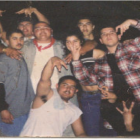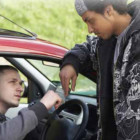
From the Streets to Cyberspace: What are the Links Between Gang Membership and Internet Use?
|
Gang members may be using the Internet to commit crimes – more so than non-gang members – according to a study published in October by JRSA Forum, the official newsletter of the Justice Research and Statistics Association. The study examined the crossover between gang-associated activities and Internet use. “Gang Offending and Online Behavior,” written by Arizona State University’s Scott H. Decker and Sam Houston State University’s David Pyrooz, involved 585 interviews with current and former gang members in five cities, including Cleveland, Los Angeles and St. Louis. According to the researchers, the average age of the subjects ranged from 25 for current gang members to 28 for ex-gang members, while young people that did not self-identify as gang members reported an average age of 23.








